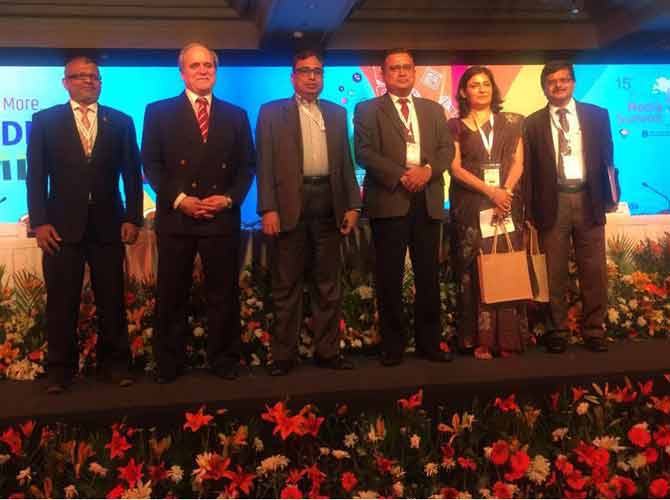Ms Purohit was part of a CEO Roundtable on Storytelling and the Success of Media


Apurva Purohit with the panelists
ADVERTISEMENT
Ever since Scherezade and the 1001 stories, we have understood the immense power stories can cast, to engage with our listeners, our audiences and our consumers. Whether it is a grandmother telling her grandson the story of Raja Harischandra and teaching him the value of honesty or a brand talking about its USP to position itself more firmly in the consumer’s mind or Star Wars creating a powerful and worldwide equity through its depiction of an alternate universe, stories have taught, transformed, invigorated and entertained all of us.
And we as storytellers and spin doctors have understood all too well that the more we immerse and draw our listeners into our stories the less likely they are to chop off our heads (or our TRPs) whether we are telling them the story through a sitcom, a film, a brand launch, an organization’s growth path or even an annual report!
As today’s topic invites us to introspect on whether story telling is at the centre stage of media success, I would like to put forward not the obvious answer which is naturally a resounding yes, but to suggest to all of you that story telling is indeed not only at the centre of all media success but at the very fulcrum of building anything that is sustainable and long lasting, not just with viewers and listeners but indeed with all stakeholders associated with building an organization, a project or even a country.
While story telling through TV, films, digital and radio is the business we are in, equally stories are a powerful way to engage with all our other stakeholders and constituents both internal or external.
When the great marketers talk about positioning their brand in the consumer’s mind ladder, is it not a tale that is being built around the car, the toothpaste or the cola drink?
The fables around Steve Jobs’ obsession with product design, the story of the spiral staircase in the marquee Apple store, the color of the logo and why Mr Jobs wore black turtleneck sweaters has less to do with the smartphones all of us carry and more to do with building the legend of the iphone and the price we are willing to pay for it as a consequence!
And so, stories have been used as powerful tools to build communities and to align people around a common cause and a common purpose, be it reaching the moon, or fighting for the share in the 9’o clock prime time slot or in building the humongous worldwide community that is the bedrock of the Star Wars franchise.
Years ago when we set up Radio City as a challenger brand fighting against the might of large well entrenched radio brands from the stables of multi media giants, the only thing we had as our differentiator was the vision of a culture of a great place to work and the only way we could explain such an imperceptible thing like a culture was through the stories we built around Radio City – the eternal story of a David fighting with Goliath, the story of tough love within the organization, even the stories about how we almost closed down till a knight in shining armor in the form of a PE fund came and rescued us , of how we all sacrificed our salaries so we wouldn’t have to ask any of our employees to go during the recession have become the folklore around which the organization’s culture has been built.
Ultimately, Ladies and Gentlemen a good story is paradoxically a reality that its- listeners, viewers, fans and even our employees can believe in and immerse themselves in.
The challenge for all of us however is to take the pains to build it on the foundation of genuineness!
Catch up on all the latest Crime, National, International and Hatke news here. Also download the new mid-day Android and iOS apps to get latest updates
 Subscribe today by clicking the link and stay updated with the latest news!" Click here!
Subscribe today by clicking the link and stay updated with the latest news!" Click here!






